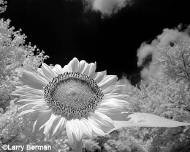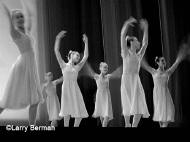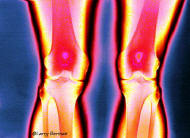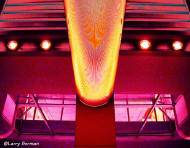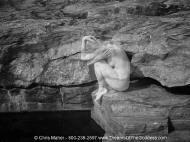 |
| |
|
|
|||
|
Shooting Digital Infrared |
|||
| Have your camera converted to shoot infrared by LifePixel | |||
| I became interested in digital infrared while researching an article with Chris Maher on shooting infrared digitally for the February 2002 issue of Shutterbug Magazine. As technology changed, it was the design of the camera that determined how sensitive the camera was to infrared light and not what had always been film sensitivity. | |||
|
One of the earlier digital cameras that had good sensitivity was the Nikon CoolPix 950. All you had to do was screw on an infrared filter (like an 87, 88A, or 89B) to capture infrared images, composing on the LCD because the camera could see through the filters. In fact, I still have three CoolPix 950's which I use for color infrared abstracts and color infrared x-ray photographs. I've found no other camera can give me the color I'm looking for. |
|||
|
|||
| While I was experimenting with color filters, Chris was using a Sony F707 which also had good infrared sensitivity. He started shooting nature and then moved on to photographing the female form. | |||
| I purchased the Nikon D70 and found that it had some infrared sensitivity. But with all DSLR's, it required composing with the camera on a tripod without the filter, otherwise you couldn't see anything looking through the viewfinder. | |||
| As digital infrared photography became more popular and mainstream, companies like LifePixel started offering a digital camera infrared conversion service. Not wanting to carry around the weight of a DSLR and lenses, I had a Nikon CoolPix 8400 converted to shoot infrared in May 2007. Then in May 2008, I had a Canon SD870 converted for infrared photography. Both cameras are unique in that their zoom lenses start at a wide angle, the CoolPix 8400 at 24mm and the SD870 at 28mm. | |||
|
All photos on this site are available for stock or
fine art sales |
| Slide scanning for ZAPP and other digital jury systems |
|
1970s ABA and NBA
Basketball photographs |
|
Web site content © Larry Berman |
|
email Larry Berman - larry@bermanart.com
|
